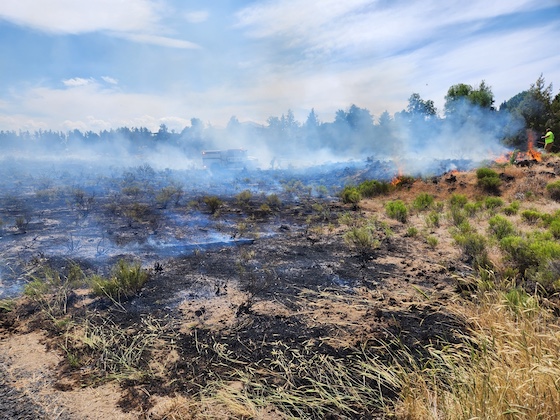Sewer project gets underway
Published 12:00 am Wednesday, March 16, 2016

- Geoff Folsom / SpokesmanThis parcel at the corner of East Antler Avenue and SE Ninth Street is already for sale in anticipation of the completion of the Eastside Sewer Interceptor.
Officials say Redmond’s expanded east-side sewer interceptor won’t just be a big pipe, but a gateway to industrial development.
Once completed, the 24-inch-wide pipeline, which has an estimated cost of $7.1 million, will serve as a master collection line for local sewage being sent to the wastewater treatment plant from an area east of U.S. Highway 97, said Steve Wilson, civil engineer for the city.
The city hopes to get council approval to go out to bid in April and start construction on the year-long project in June.
The project has been part of Redmond’s 20-year public facilities plan, said Heather Richards, the city’s community development director.
It was originally intended to be paid for as growth occurred, but the city decided to be proactive to make Redmond more competitive statewide for development.
“This is highly unusual for a smaller community in Oregon,” she said. “Larger cities have the resources to do this type of investment, but typically smaller communities do not, and thus are not competitive with larger cities.”
City Councilor Anne Graham pushed for the project for two years, beginning during her time on the city’s budget committee, she said.
She worked on site selection for large factories during her career and knew that businesses would turn down Redmond because of its lack of wastewater capacity.
“It had of course been designed and planned for many years,” Graham said. “What I did was bring it off the shelf and get it actually built.”
The new phase
Two existing miles of the east-side sewer interceptor were completed between 1998 and 2007, but the two new proposed phases will allow a more complete connection, officials said.
The line will run from around NE Oak Avenue in the north to state Highway 126 in the south.
Industry in eastern Redmond now relies on a series of city and private pump stations to get rid of its sewage, Wilson said. The new line will allow the waste to flow by gravity.
“It saves the city on maintenance and the cost of operating two pump stations,” he said.
The first phase of the project will serve 1,502 acres, 909 of which is now vacant, Wilson said.
“At this point, they’ve been unserviceable,” he said.
Attracting business
The new interceptor will be particularly helpful in luring new business to the industrial area, said Jon Stark, senior manager at Redmond Economic Development Inc. The key area it will serve is 465 acres on the eastern edge of the city between East Antler Avenue and Highway 126.
The area, which was recently zoned industrial, is known as the 1544 land, after a 2012 state Senate bill that allowed the city to zone the area as long as it reached an agreement with the Oregon Department of Transportation to mitigate potential traffic impacts.
“It’s really about the fact that companies looking for land (are) wanting shovel-ready services,” Stark said. “This is the city of Redmond making sure the infrastructure is adequate to serve future business opportunities.”
The process is a contrast to Bend, which has struggled to get industrial development and expand its urban growth boundary, Stark said.
“That’s really the employment area for Redmond,” he said of the east-side industrial zone. “We want to have adequate supply and space for these companies to locate.”
Without the new interceptor, the existing sewer connections serving the 465-acre tract would not have enough capacity to handle the flow, City Engineer Mike Caccavano said in a report.
The area is primarily planned as industrial, but the line will also help with new subdivisions being developed, Wilson said.
The project meant working with outside companies before construction could start, but Wilson said that has now been resolved. Cascade Natural Gas is moving gas lines along Franklin Avenue, while the city, after six months of negotiations, worked out an agreement with Burlington Northern Santa Fe Railway to use 1,500 feet of right-of-way along its tracks.
“It’s been a very good, smooth process so far,” Wilson said. “I think there’s a lot of enthusiasm to get this built.”
The second phase
A second phase of the project, which will complete the interceptor from Highway 126 south to SW Elkhorn Avenue, is estimated to cost $8.4 million. Wilson said the first phase is being funded through a state Clean Water Revolving Fund loan. The city does not yet have money for the second phase, which will serve 3,000 acres.
Redmond plans to pay back the loan using money from system development charges that developers pay, Richards said.
Disruptions to drivers should be minimal during construction, though three blocks of Franklin Avenue will briefly be restricted to local access while pipe is placed there. Wilson said that will give the city a chance to make improvements to the road, including putting in new curbs.
The opportunities the interceptor will create for business investment and job creation will be an important part of Mayor George Endicott’s State of the City speech Tuesday, Richards said.
— Reporter: 541-548-2186, gfolsom@redmondspokesman.com






